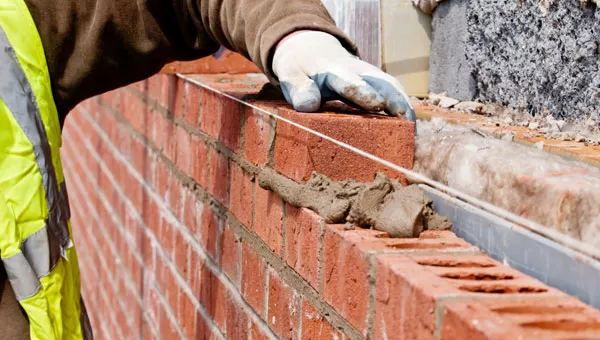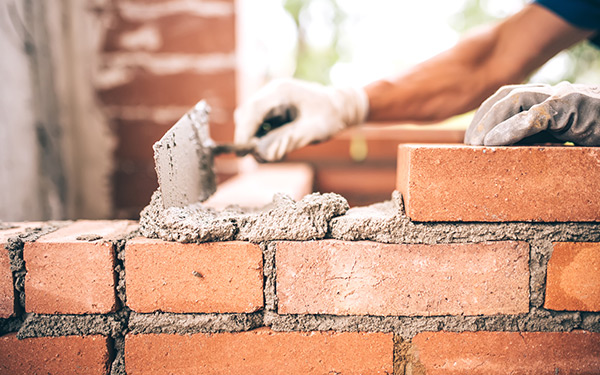Top-notch Roofing Contractor Services for Your Home
Top-notch Roofing Contractor Services for Your Home
Blog Article
Opening the Keys of Lasting Stonework Construction Practices for Eco-Friendly Structures
Amongst the myriad approaches to eco-friendly building, sustainable stonework construction stands out as a time-tested and sturdy technique that holds a wealth of untapped capacity. From the option of products to cutting-edge building and construction methods, the keys to achieving sustainability within stonework building are diverse and intriguing.
Benefits of Sustainable Stonework Building And Construction
Welcoming sustainable stonework building practices not just reduces environmental effect however additionally offers long-lasting financial advantages to contractors and areas. By using products like recycled bricks, blocks, and rocks, building contractors can dramatically decrease the carbon footprint of their jobs while promoting resource efficiency. Additionally, sustainable masonry building and construction methods, such as proper insulation and thermal mass residential properties, can improve energy effectiveness within buildings, bring about decreased operational costs over time.
Additionally, the sturdiness and strength of stonework structures add to long-lasting economic benefits. Buildings constructed making use of sustainable masonry practices commonly require much less maintenance and fixing, converting to set you back financial savings for building contractors and homeowner. The longevity of masonry products additionally ensures that frameworks remain stable and safe and secure, decreasing the need for regular renovations or substitutes.
Eco-Friendly Stonework Products
Utilizing green stonework products is an essential step towards boosting the sustainability of building techniques and decreasing environmental impact while making the most of long-lasting economic advantages. Lasting stonework products are sourced, generated, and used in a way that lowers general ecological impact. Lasting concrete blocks include recycled accumulations and might include improved insulation residential properties, contributing to power efficiency in structures.
In addition, all-natural materials like adobe, rammed earth, and straw bales supply outstanding thermal mass homes, minimizing the demand for heating and cooling down energy. These materials are usually in your area available, advertising regional economic situations and lowering transportation-related carbon emissions. By picking green masonry products, building and construction tasks can dramatically minimize their environmental impact and add to the production of much healthier, more lasting built settings.
Energy-Efficient Stonework Techniques
Power performance plays an essential function in improving the sustainability of masonry construction techniques. By implementing energy-efficient stonework methods, building contractors can significantly reduce the overall energy consumption of a building, causing lower operational costs and a smaller environmental footprint. One vital energy-efficient masonry method is making use of thermal mass, which involves integrating thick products like concrete or brick right into the structure's framework to absorb and keep warm. This aids manage interior temperature levels, decreasing the requirement for mechanical home heating and cooling systems.

Technologies in Sustainable Stonework
Recent innovations in sustainable masonry methods have actually caused innovative methods that are improving the building and construction industry. One such advancement is the advancement of self-healing concrete, which makes use of bacteria embedded within the concrete to heal fractures autonomously. This breakthrough not only reduces upkeep expenses yet also enhances the resilience of masonry structures, adding car lots near me to their sustainability.
An additional noteworthy technology is the usage of recycled aggregates in masonry building - masonry contractor. By integrating products such as crushed ceramic waste or recycled glass right into concrete blends, building contractors can minimize the environmental impact of building projects while preserving toyota near me structural honesty. This technique not only diverts waste from landfills but likewise preserves natural deposits, making it an essential development in sustainable stonework construction
In addition, the combination of electronic style tools, such as Structure Details Modeling (BIM), is transforming the method masonry frameworks are intended and constructed. BIM permits more accurate estimations, decreased material wastefulness, and improved power efficiency, inevitably bring about even more lasting structure methods. These developments jointly represent an encouraging future for sustainable stonework building in the era of eco-friendly structures.
Future Trends in Masonry Sustainability
With the innovative strides made in sustainable masonry practices, the future fads in masonry sustainability are poised to more transform the building sector. One of the essential patterns forming the future of masonry sustainability is the boosted combination of technology. Improvements such as Structure Details Modeling (BIM) and virtual reality simulations are being used to optimize masonry construction processes, causing lowered product waste and boosted power efficiency in structures.
In addition, the growth of unique sustainable materials is set to play a considerable duty in improving the eco-friendliness of masonry construction. masonry contractor. Innovations like self-healing concrete, recycled accumulations, and bio-based binders are find getting grip for their ability to lessen ecological impact while keeping architectural honesty

Conclusion
Finally, sustainable stonework construction practices offer various benefits for eco-friendly structures. By making use of environmentally friendly products and energy-efficient techniques, stonework can contribute to a much more lasting built atmosphere. Developments in sustainable masonry are continuously being developed to further enhance the ecological performance of structures. Looking towards the future, the pattern of masonry sustainability is expected to grow, resulting in more ecologically friendly and energy-efficient building techniques in the years to come.
Report this page